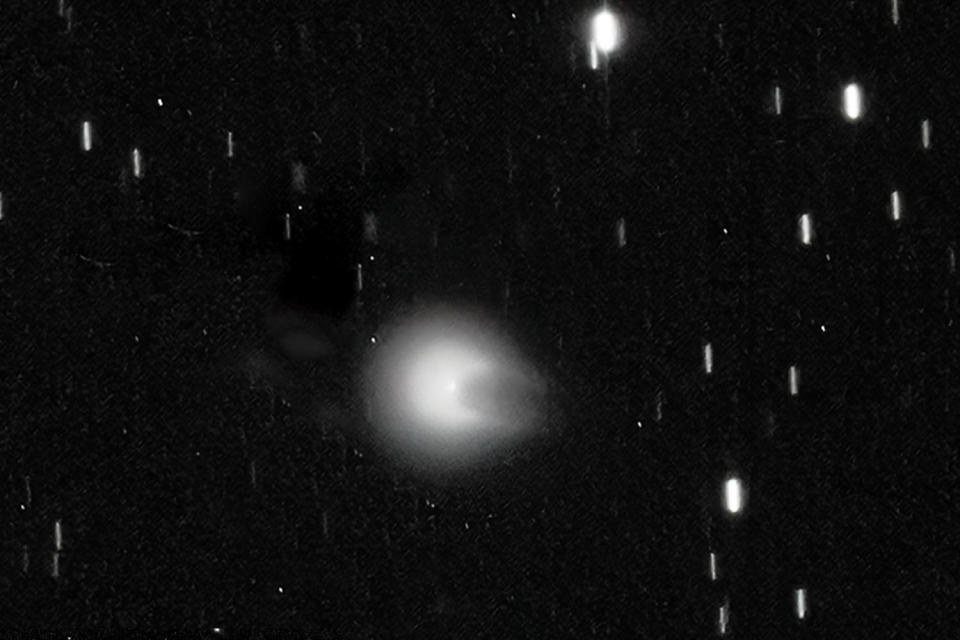Comet Chasers: Give the Devil His Due
A Comet with two distinct “horns” of gas and ice, earning it the nickname “Devil Comet,” is hurtling through the inner solar system and may become visible to the naked eye in the spring as it reaches its closest point to Earth.
Known as Comet 12/P Pons-Brooks, this celestial object poses no threat to our planet. Instead, it presents an opportunity for stargazers to try and catch a glimpse of the comet as it nears Earth during its 71-year orbit around the sun.
On April 21, 2024, Comet 12/P Pons-Brooks will reach perihelion, the point in its orbit closest to the sun. Soon after, on June 2, the comet will pass closest to Earth. If weather conditions permit and the skies are dark enough, astronomers have suggested that the comet may even be bright enough to be seen without the aid of a telescope or binoculars.
In the meantime, astronomers have been treated to a spectacular show by Comet 12/P Pons-Brooks through powerful telescopes.
Recent observations have revealed that the comet erupted twice in the past four months – once in July and again earlier this month.
During both outbursts, the comet became significantly brighter and ejected clouds of gas and icy debris, creating the appearance of two matching horns. Some have even likened the comet’s unique post-eruption appearance to the Millennium Falcon starship from the “Star Wars” franchise.
Eliot Herman, a retired professor from the University of Arizona’s School of Plant Sciences and an amateur astronomer, captured breathtaking images of Comet 12/P Pons-Brooks and its devil horns using remote telescopes in Utah.
The comet consists of a core made of dust, gas, and ice, surrounded by a bright cloud of gas known as a coma. The core can be heated by sunlight and solar radiation, sometimes leading to these explosive eruptions observed in July and October.
According to Herman, the temporary horns of the comet are believed to be a result of these icy eruptions. The structure of the comet may determine how the gas and ice clouds appear from Earth, giving them the appearance of horns when observed through ground-based telescopes.
However, the exact mechanisms behind these phenomena are still not well understood, as Herman explained.
“By intensively observing this comet, we may find answers to these questions. There is a community of observers who are actively studying this,” he disclosed in an email to NBC News.

Comet 12/P Pons-Brooks was first discovered in 1812 by French astronomer Jean-Louis Pons. It was later observed again in 1883 by astronomer William Brooks. After its close approach this spring, the comet will not return to the inner solar system for another 71 years.
Astronomers are eager to study Comet 12/P Pons-Brooks as it passes near Earth, before it swings around the sun and propels back into the outer solar system.
The timing of its approach aligns with a Reference


